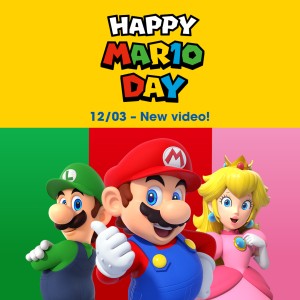Localising Hotel Dusk, pt. 1
09/05/2007
For a game that relies on dialogue and characterisation as heavily as Hotel Dusk: Room 215' , localisation is a key process to ensure the title can be enjoyed overseas. For NOE's Product Localisation and Testing Service in Frankfurt, Germany, it is their daily business to make the most out of the source material when adapting it for the different European markets.
We asked the localisation team of Hotel Dusk: Room 215 to tell us about the hurdles they met on the road to the game's release.
Paul Logue: Hi. My name's Paul Logue. As software producer, I was responsible for the execution and day-to-day coordination of the Hotel Dusk software localisation. What exactly does this entail? Well, apart from daily task designation, problem solving and brainstorming, I made sure that the title was released on schedule and in a form that realises CING's original vision. I also like to think I provided the translators with a shoulder to cry on! (laughs)
Mark Boyle: My name is Mark Boyle and I am a Japanese-English translator. I was in charge of modifying the NOA translation for the UK market, as well as doing some retranslation work from the original Japanese. Hotel Dusk was the first major project that I've worked on.
Frédéric Venet: My name is Frédéric Venet and I was the lead Japanese-French translator on Hotel Dusk. Like Mark, this was my very first big project' as a translator but I'm also working on a number of other major projects at this very moment.
Fabrizio Cattaneo: Hello, I'm Fabrizio Cattaneo and I was the Japanese-Italian translator for this game. I have to say that Hotel Dusk was also my first experience with a big title! I've got other projects in the pipeline at the moment, but I'm afraid I can't say anything about them!
Thomas Ito: I'm Thomas Ito, and I was responsible for the German part of the localisation for this game. Other titles I have translated include Mario & Luigi: Superstar Saga' on Game Boy Advance, Paper Mario: The Thousand-Year Door' on Nintendo GameCube, and The Legend of Zelda: Twilight Princess' for Wii. However, some of them were translated before I got married, so in the credits you'll only find my maiden name... (laughs)
Raúl Arol: Hello. My name is Raúl Arol and I worked as lead Japanese-Spanish translator on Hotel Dusk. During the last year I also worked as lead translator on Square-Enix's Kingdom Hearts II' and translated other titles such as Red Steel and Warhammer: Mark of Chaos'.
Can you explain the process of localising a game to our readers, applied to Hotel Dusk? What sort of phases does the project go through?
PL: Certainly. Broadly speaking, every localisation we produce here passes through a similar set of stages. After we plan the project, chart its course and identify any potential pitfalls, translation starts. Here the translators translate the texts, adapt certain content to make it suitable for audiences in their own respective countries, and then they give the fruits of their labour a final polish. Hotel Dusk's translation was completed in around four weeks.
Following this, we have a testing period, where a team of native speakers ensure that all texts are correct and that the software is problem-free. For Hotel Dusk, this stage lasted three weeks. Finally, from the software side, there are a further series of safeguards in place to ensure that our software functions correctly.
Whilst all this is happening, our artwork team is hard at work creating the packaging and manual, and once both software and artwork are ready, it's a simple matter of bringing it all together and shipping the final product.
How would you describe the localisation of Hotel Dusk in terms of volume? How many people worked on the project?
PL: Initial estimates placed the text volume in the region of 80,000 English words, but by the end of the translation period we had translated 120,000 words! To put this in perspective, The Legend of Zelda: Twilight Princess' had a text volume of approximately 150,000 words, whilst New Super Mario Bros.' has a mere 3,000 words.
Of course, we can't always rely on text volume alone when calculating how long a translation might take. It really depends on the nature of the text in question. For example, is the game an old-school platformer with simple texts? Or will the translator require some kind of academic knowledge to do it justice?
One of the real challenges we faced in the course of localising Hotel Dusk was how to retain the sense of mystery and grit that would make the title appeal to an adult audience. Needless to say, the last thing we wanted to do was dumb down the text by attempting to appeal to some kind of universal common denominator. Fortunately, both CING and NCL were very supportive of the decisions we made, meaning that our talented bunch of translators were given all the necessary leeway to make their texts ring true in their respective languages.
As for how many people actually worked on the software here at NOE, we had a maximum of 10 translators, 40 fantastic testers, two testing coordinators and a whole host of industrious support staff working simultaneously. As far as projects go, it was quite big!
Come back next week for part 2!





